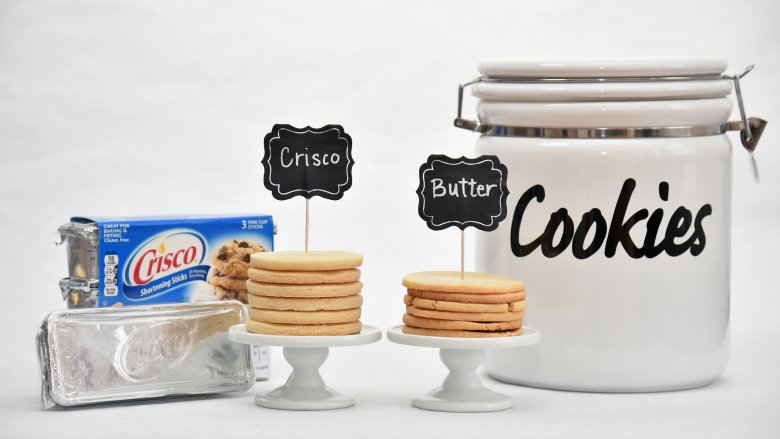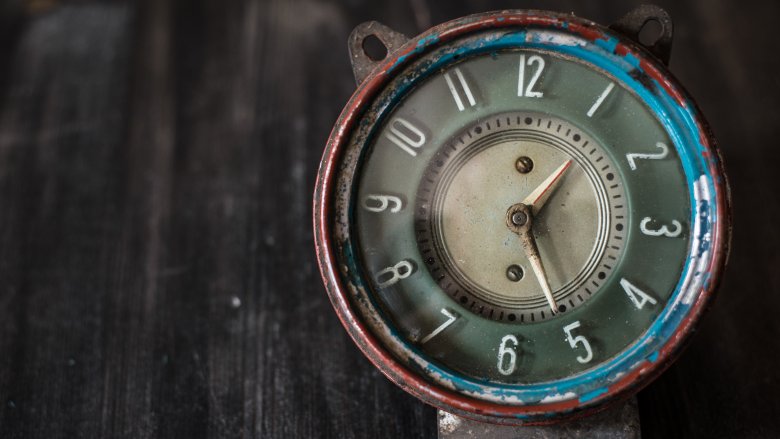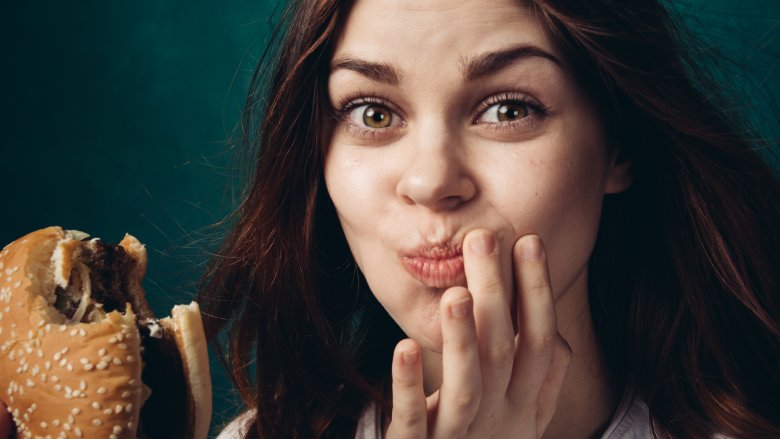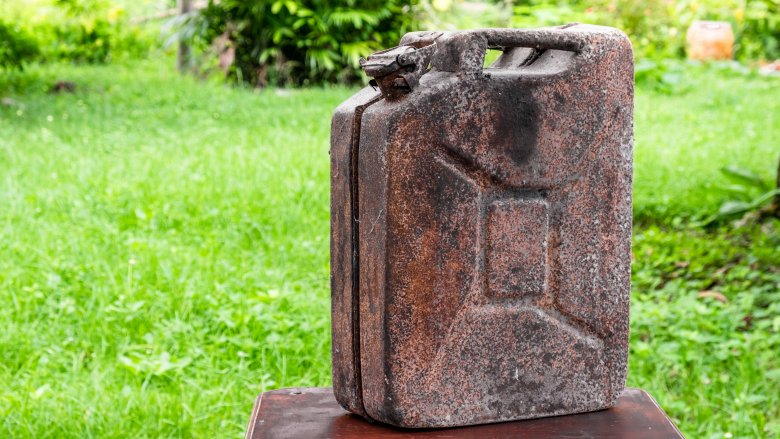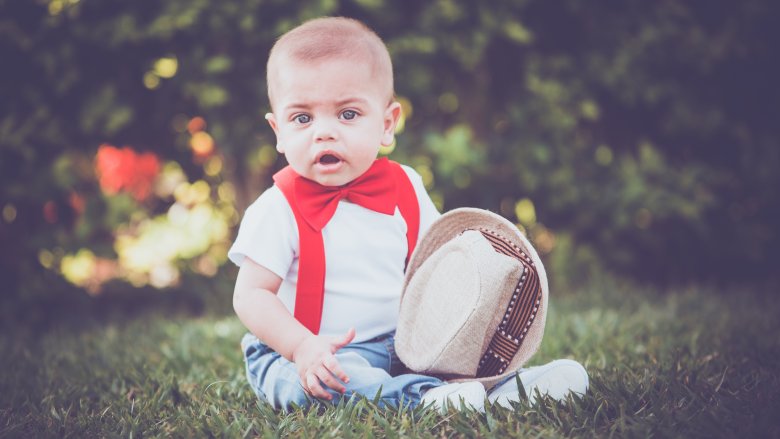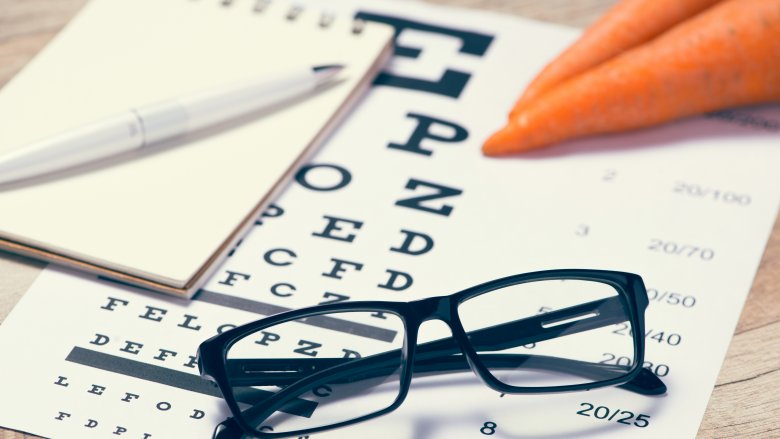Bizarre Things Your Grandparents Probably Believed
We may receive a commission on purchases made from links.
First, let's make it clear that grandparents — of any age — can give you all kinds of good things, like knowledge, wisdom, and cookies. Sit down. Talk to them if you're lucky enough they're still around. You'll be surprised at what you can learn, and as hard as it is to believe, they were your age once. That is, they aren't perfect, either, and if you get them talking, chances are you'll find they were taught a whole lot of really weird stuff. Like this stuff.
A dead rabbit means a baby is on the way
Pregnancy tests have come a long way and today, you can get the results from the comfort of your bathroom floor. (According to the commercials, at least, doesn't everyone hang out on the floor in their bathroom?) It wasn't always so easy, according to LiveScience, and the history of pregnancy tests is full of fascinating pseudoscience and a lot of urine. In Grandma's day, scientists knew about a hormone called hCG that only pregnant women produced, which led to the development of the pretty awful Aschheim-Zondek test. Women would send off their sample, wait some days for it to be tested on a rabbit, and if the rabbit died then congratulations, there's a baby on the way.
Sort of. Snopes says it's a bit of a misconception, and what was really happening behind the scenes was that the rabbit died for every single test. Clinicians would inject the poor, adorable test subject with the urine sample, then kill the rabbit to remove and inspect the ovaries for signs of changes signaling the presence of hCG and pregnancy. The practice started in the 1920s and continued for decades, although they later figured out how to check the ovaries without killing the rabbit. Other animals were also sometimes used, but it's still a weird thing to welcome one life by ending another.
Feed a cold, starve a fever
Get the sniffles around Grandma or Grandpa, and they'll probably recite an old cure-all: "Feed a cold, starve a fever." They're actually half right, and if you have a cold you should get something to eat. Get something healthy — like a bowl of chicken soup — and it'll help your body fight illness and keep itself warm. But starving a fever is the exact opposite of what you should do, and whoever decided this was horribly wrong.
Scientific American says when you have a fever, it's incredibly important that you eat. A fever is actually the body's response to intruders, and it's a sign your immune system is trying to fend off whatever's attacking you. When your temperature increases, so does your metabolic rate and the calories you're burning. That means you'll have to replenish your body's nutrients, especially when you have a fever. You do that by eating and drinking, and that's also where chicken soup comes in. It has both fluids and nutrients, making it the perfect home remedy. Plus, it's delicious.
Giving a baby alcohol
Ever wonder how parents kept kids quiet before smartphones? Our grandparents had something else entirely: liquor.
Starting in the mid-19th century, hard liquor was used for babies with almost shocking regularity. VinePair quoted psychiatrist Dr. M. Esther Harding, writing in 1920: "Alcohol is, I suppose, the most valuable sedative and hypnotic drug we possess for infants and young children." At the time there were all kinds of products on the market to give the harried housewife a helping hand. Those were things like Mrs. Winslow's and the more generic gripe water, which was as much as 3.6 percent alcohol. For a fun comparison, a dose of that is the infant equivalent of you throwing back about five shots of whiskey.
This little bit of wisdom continues to be handed down in some places, and if you dive into the depths of parenting forums on the internet, you'll find no shortage of people who — anonymously — admit to still giving their tot a bit of whiskey. It's usually reserved for teething pains today, although experts (via CNN) recommend other products. We shouldn't have to tell you why.
Crisco and trans fats were a healthy alternative
Sure, our relationship with food has changed with the advent of social media. None of us would thrive on wartime rationing, so kudos to Grandma and Grandpa for dealing with that. With that perspective, you can almost understand why every family had a tub of Crisco on standby.
Almost understand. Almost because of the Weston A. Price Foundation's retrospective on just how Crisco came to be. It started with a partnership between a candle-maker and a soap-maker, who you know as Proctor and Gamble. Both businesses relied on tallow and lard, but by the 1890s that industry was controlled by the meat packers. Proctor and Gamble decided to invest in a ton of cottonseed oil mills, then developed hydrogenation. That gave them a product made from a liquid and turned into a solid that was great for making soap and candles. You see where this is going, right?
Electricity was putting a stranglehold on the candle market, and a person can only sell so much soap. They decided to branch out again because why shouldn't you be able to eat this stuff? They introduced the world to Crisco (which comes from "CRYstalized Cottonseed Oil") in 1911, and marketed it as an all-vegetable, all-healthy alternative to that butter and lard you've been using. Kitchen cupboards were never the same, and neither were arteries.
Radioactive products were totally fine
Remember the first time you saw something that glowed in the dark? Pretty neat, right? You'll forgive your grandparents, then, for thinking 1920s-era glow-in-the-dark things were the bee's knees ... even if they were as deadly as they were cool.
In 2014, NPR reported on the death of one of the last radium girls, Mae Keane. In the 1920s, Keane had been one of the women who worked for the US Radium Corp, hand-painting the numbers on watch dials with a brush they rolled to a point against their lips. One worker could paint more than 200 watch dials a day, but Keane was a bit of an oddity. She didn't like the taste of the radium, so she only lasted a few days at work. It saved her life because by 1927 more than 50 girls had died in horrible ways. Deborah Blum, author of The Poisoner's Handbook, says their bones just crumbled. One woman went to have a tooth pulled, and the dentist pulled off her entire jaw.
By World War II, precautions were put in place for radioactive material, but there was still a shocking amount of stuff on the market both in the States and Europe. According to io9, you could buy radioactive makeup and toothpaste (for that extra-bright complexion) and hand cleaner (in a container boasting "It takes off everything but the skin"). You could even buy radioactive suppositories in the 1930s, and radium condoms from Nutex. The bee's knees? Yep, all 19 of them.
Chew more for good health
Fad diets are nothing new, and around the time your grandparents were worried about keeping their youthful figures, the world was still listening to the likes of Horace Fletcher. He called himself an economic nutritionist, and he preached the idea that eating healthy was all about the chewing.
He exhorted everyone to chew, chew, and chew some more. Fletcher outlined some insane guidelines for how you should eat, and Slate reports that a little shallot should be chewed 722 times "before disappearing through involuntary swallowing." People took him seriously, too, and he could count Sir Arthur Conan Doyle and Franz Kafka among his adherents.
Fletcherism even got the attention of President Herbert Hoover, who sent him to Belgium to help with World War I relief efforts. The idea was that the more you chewed, the better it was for you. Fletcher believed it maximized the nutrients you got from each bit of food and ultimately meant you could exist on less. He also said it minimized waste products coming out the other end, and claimed doctors were so inspired by his neat, round little poop balls that some kept them on display. There are a lot of questions to be asked of Fletcher, but the most important is probably how many licks he thinks it should take to get to the center of a Tootsie Pop.
Electricity would be the death of people and fairies
New technology can be scary, and for your grandparents, new technology meant having your house wired up to electricity. Not everyone was thrilled, and it's possible your grandparents were at least a little scared of it.
Electric Generations is a project put together by the University of Hertfordshire that examines how different generations relate to electricity. When they looked back to the late 19th and early 20th centuries (via TheJournal.ie), they found reports of people describing electricity as a powerful force for evil. It was such a prevalent belief it even made it into asylum and court records. Researchers found discovered a very real fear of electrical switches, and countless families in rural Ireland refused to be hooked up to the power grid for fear electricity would burn down their homes.
That wasn't long ago: Rural Ireland only got electricity beginning in 1946. There was another fear, too, and while it might be uniquely Irish and British, it goes a long way in showing how terrified people were of this new-fangled thing called electricity. Folklorists tell of the fear that modernization and electricity would drive away the fairies. In 1938, one Devon woman wrote her local news, lamenting the fact she hadn't seen the pixies her villages elders claimed to have seen often, a change she blamed on the relentless march of progress.
Gasoline is a great way to treat lice
Lice has been a problem for as long as the world has had both children and bugs, and there are lots of completely safe products you can use to de-louse your child or yourself. Snopes warns, though, while your grandparents might claim to have a tried-and-true home remedy, under no circumstances should you use gasoline.
The "treatment" pre-dates World War I and even more shockingly, it's still being used in some places. Yes, even though it's a great way to set your head on fire, some people still do it. It's those little details that make life such an adventure sometimes, but even the University of Utah is still warning parents not to try this old folk remedy to try to get rid of lice. Kerosene doesn't work, either, and while we're on the subject, neither does turpentine or benzine. Just because Grandpa might be a venerable fountain of wisdom, that doesn't mean you have to listen to him all the time. Sometimes, it's best just to nod along and then head to the pharmacy anyway before anyone pours gasoline on your scalp.
The Better Baby and Fitter Family competitions were just harmless American fun
Beauty pageants and talent shows are nothing new, and what's the harm in showing off your family? In the 1910s and 1920s, there was a specific kind of contest your grandparents might have thought was harmless fun, but now? Now you know better.
We'll start with the Better Baby contests. They were held at state fairs in the beginning of the 20th century, and they were basically a livestock show adapted for humans. They were lighthearted, fun, and the public face of the eugenics movement. And yes, that's "eugenics" as in "some people are genetically just better than others." You know, the same thing Hitler preached.
Better Baby contests highlighted the value of babies who conformed to a certain standard, says the University of Michigan's Martin S. Pernick, PhD. They were what he calls "positive eugenics," and by extension, that's what the Fitter Family contests were, too. According to the Eugenics Archive, those were started in 1920 by two eugenicists who wanted to start a contest that focused on genes more than care. Families were examined as a group, were mostly white, educated, and Protestant, and had everything from their blood to their IQ tested. Winners got medals that proclaimed "Yea, I have a goodly heritage," and yes, contests were sponsored by the American Eugenics Society.
Carrots made you see in the dark
Did Grandpa ever tell you to eat your carrots because they'd help you see in the dark? He wasn't just trying to get your to eat your veggies, he was repeating an awesome piece of wartime propaganda.
First, the Smithsonian says there's a shred of truth. Carrots are high in the beta-carotene crucial to maintaining healthy eyes. But around the time of World War II, children and adults alike were told carrots could improve your eyesight and help you see in the dark. Pretty cool, right? Who wouldn't want a vegetable that can confer superpowers?
There were two things at work here. First, wartime rationing meant there were fewer things like sugar and butter and more things like vegetables available to people on the home front, and telling kids they'll get some night-vision is a good way to get them to clean their plate. Second, the Allies had just invented radar and they wanted to keep it a secret from the Germans. The Ministry of Information put it out there that their pilots were so darn good because they ate a ton of carrots and had night vision. The everyman was told they, too, could have night vision that would help them see during blackouts if they'd just eat their carrots, and everyone believed it.




